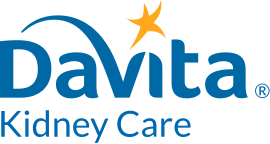People with kidney disease can go out to eat at restaurants as long as they make smart meal choices that are low in sodium, potassium and phosphorus.
Eating out is a nice treat every once in a while, and you don’t have to miss out if you’re on the dialysis diet. One easy way to limit these nutrients is to share a meal or eat half of your meal at the restaurant and take the other half home since restaurant portions are often too large.
In general, a good plan to follow when eating out is:
- Plan ahead. Know what the restaurant offers and what choices are best for your diet.
- Cut back on fluids and high-potassium foods during the day if you plan to go out for dinner. Request a small glass and no refills for your beverage when you eat out.
- If you are prescribed phosphorus binders, make certain that you take them with you when you leave the house. Carry them in a pillbox or the pill bottle, and take them as prescribed with meals eaten away from home, instead of waiting until you return home.
These tips for eating out on the renal diet are recommended for people on in-center hemodialysis. Diets may be different for people on peritoneal dialysis (PD) or home hemodialysis (HHD). Your renal dietitian can help you decide what is best for your particular diet.
Breakfast choices for eating out on the dialysis diet
If you’re going out to eat for breakfast, eggs are always a good choice. If you order an omelet, have it made with low-potassium vegetables such as green pepper and onion. To cut down on sodium, potassium and phosphorus, avoid fillings such as cheese, avocado and salted or cured meats including ham or sausage in omelets. You can also ask that eggs be prepared with no salt. French toast, toasted white or sourdough bread, bagels, English muffins and fruit-filled muffins are all good options, as well as low-potassium fruits such as pineapple, grapes and applesauce. Eat bacon only occasionally and in small quantities (one or two strips) to limit sodium. Breakfast beverages that are low in potassium include apple juice and cranberry juice.
Lunch and dinner choices for eating out on the dialysis diet
At restaurants, good choices for lunch and dinner for the dialysis diet include grilled, broiled or baked steak, burgers, chicken, pork chops, fish and seafood. It is recommended that meat, fish and poultry are limited to one 3- to 4-ounce serving per meal or the amount indicated on your individual meal plan. (Three ounces is the size of a deck of cards.) Make sure to ask specifically that your meal be prepared without salt, salted butter, soy sauce or anything else salty (such as capers, pickles, onion salt, garlic salt or salty sauce). If your food tastes salty, stop eating and ask the chef to confirm that it was prepared without anything salty.
Kabobs and fajitas can also be enjoyed by people on the dialysis diet in a restaurant. Dialysis-friendly side dishes include steamed rice, buttered noodles or pasta, a small green salad with low-sodium dressing and coleslaw. Low-potassium vegetables are also a good side order. These include green beans, carrots, summer squash, corn and cauliflower. Again, specifically request that all items you order be prepared without any salt or salty seasonings.
Casseroles and mixed dishes are often high in sodium, phosphorus and potassium. Instead of these, try a steak, chicken, fish or shrimp entrée. It’s also wise to request condiments and salad dressings "on the side" to limit sodium. Desserts that are better choices on the renal diet include sherbet, fruit pie, cobbler, lemon meringue pie, angel food cake and pound cake. Desserts you may want to avoid include pudding, cheesecake and anything chocolate.
Fast food on the dialysis diet
If your idea of eating out is swinging through a fast food drive thru, there are some food choices for the dialysis diet that are better than others. Consider ordering a hamburger on a bun with lettuce, onion and a small amount of ketchup or mustard. A tuna, egg salad, roast beef or turkey sandwich with lettuce, onion, mayonnaise or mustard is also a good choice, as is a grilled or broiled chicken sandwich. For a beverage, a small, non-cola soda or non-carbonated options such as lemonade, brewed tea, coffee or water is acceptable.
Phosphorus binder reminder
If you are prescribed phosphorus binders, make sure to bring them with you when you eat out at restaurants and take them before, during or immediately after your meal as your doctor or renal dietitian has recommended. Phosphorus binders help control the amount of phosphorus that is absorbed into your blood from the foods you eat. When eating out, phosphorus binders are important because you can never be exactly sure how much phosphorus is in the food you order.
Summary
If you are on the dialysis diet, it is possible to treat yourself to a day or night of eating out and stay faithful to your renal diet as long as you make healthy food choices that are low in sodium, potassium and phosphorus and stay within your fluid allowance. By planning ahead, cutting back on fluids earlier in the day and taking your phosphorus binders as prescribed, you can enjoy your favorite restaurants on occasion and still keep your lab results in a healthy range.


